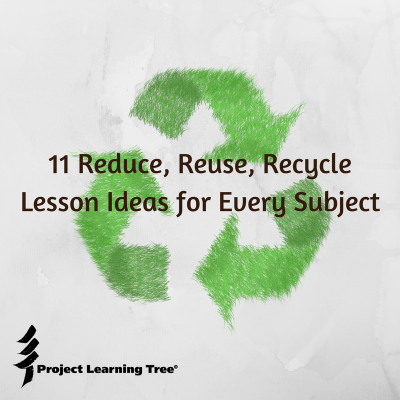 Reduce, reuse, recycle is a phrase that many of us have learned when we were in school. Now we can incorporate these principles into the classroom to pass it on to the next generation. These activities can help students explore how to put this phrase to use in many different ways.
Reduce, reuse, recycle is a phrase that many of us have learned when we were in school. Now we can incorporate these principles into the classroom to pass it on to the next generation. These activities can help students explore how to put this phrase to use in many different ways.
You can give “reduce, reuse, recycle” a whole new meaning by incorporating this concept into many subject areas. Many of these hands-on project ideas can be adapted for any grade level.
1. Observe how organic and inorganic materials decompose
Subjects: Science, language arts
It’s important to teach students why they should reduce, reuse, recycle. A hands-on activity that shows how different kinds of materials decompose will help bring the concept to life.
As a class, choose a few different kinds of organic and inorganic materials to observe. Have students predict how long it will take for each item to decompose and keep a journal of their observations (here’s one example). Younger students can make drawings of the materials and older students can write more detailed descriptions of what they observe.
The goal of this lesson is to show that only the organic material decomposes quickly – inorganic materials will sit around in landfills for a long time. Fortunately, many of these materials are easy to recycle.
2. Start a composting project
Composting is one way to reuse organic material that may otherwise may end up in a landfill.
This project can be done on a small scale inside the classroom or on school grounds, or you can make it an integral part of how your school works. Use this hands-on project as a way to introduce concepts about how organic materials decompose. This is another journaling opportunity for students as they observe how your compost project changes over time.
Subjects: Science, language arts
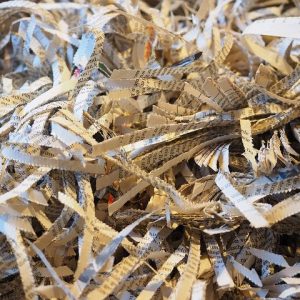 3. Make your own paper
3. Make your own paper
Subject: Art
One of the best ways to understand how recycling works is to do it yourself! Making your own paper using scraps requires a few materials and preparation for this activity to run smoothly in the classroom. You can use a guide like this one for step-by-step instructions, or this free activity Make Your Own Paper from Project Learning Tree’s PreK-8 Environmental Education Activity Guide. Watch a video of the paper-making process used in this activity.
4. Calculate your impact
Subject: Math
We all want to feel like we’re contributing to something bigger than ourselves and that we’re making a difference. If we reduce our consumption, it’s helpful to know what kind of impact it can make. Here are some questions and ideas to consider:
- Calculate how much trash they generate in a day, week, month, and year.
- Calculate how much trash their family, the school, their city or town, and their state generates per year.
- What are some ways they could reduce their CO2 emissions? Calculate how much it would reduce their emissions if their family used public transportation to go to school and work, used energy-efficient lightbulbs in their house, switched to a vegetarian or vegan diet, etc.
- If they reduced their CO2 emissions by 1/3, how much would CO2 would they produce? How much CO2 would they save?
For younger students, you can put together age-appropriate word problems. These estimates of CO2 emissions and this information about how much trash Americans produce can provide some numbers to start with. For older students, it could be a project of its own by having them conduct research on the different scenarios you propose.
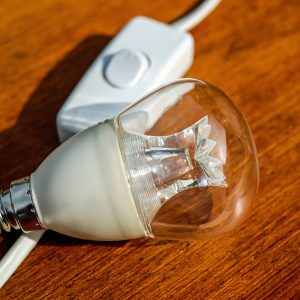 5. Home energy audit
5. Home energy audit
Subjects: Math, science with an engineering component
Have students make a list of all the appliances and light bulbs in their house. How much energy does their house use if all the lights are on for 4 hours per day? If their appliances are on for 2 hours per day? How much energy could they save if they switched to energy-efficient appliances or lightbulbs?
For younger students, you can provide estimates of how much energy household appliances use to simplify the project. For older students, you may want to show them how to use a watt meter so they can measure their own energy use.
For more energy-saving ideas and instruction, see PLT’s Energy Investigation and our Save Energy At Home list of questions for students and their families.
6. Local business energy audit
Subjects: Math, science with an engineering component
You can take your home energy audit project to the community level by researching energy use of a local business. Find out how much trash they generate and/or how many appliances they use daily. Are there any opportunities for them to reduce their trash or CO2 emissions? If so, how many trees could they save or how much trash or CO2 emissions could be reduced? For a simpler project, provide estimates of how much trash they produce or CO2 emissions they generate for a few local businesses. Older students can call or visit a local business to do an energy audit by gathering their own information.
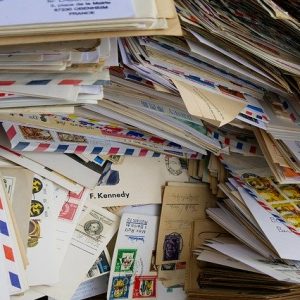 7. Write proposals to companies and lawmakers
7. Write proposals to companies and lawmakers
Subjects: Language arts, civics
Many times when we talk about reduce, reuse, recycle, it’s focused on individual actions. We encourage students to practice this at home with their family. However, the biggest contributor to climate change is industrial activities – not “human” activities like using your wash machine or turning on your stove. By connecting with local businesses or lawmakers, they could potentially make a bigger impact on reducing CO2 emissions. For example, this second-grader convinced fast food chains to use more recycled paper products.
Have students find a local business or lawmaker they’d like to influence. Have them write a letter asking them to take an action to reduce their CO2 emissions such as using more recycled materials, composting their organic waste, or supporting a law that will protect local forests. Help students think about who would be the best person to receive the letter, which action they want the business or lawmaker to take and reasons why that action is important.
For younger students, you may want to choose one business or lawmaker to write to as a class. Older students may be able to do their own research on a company or lawmaker they would like to influence. In addition to writing a letter, older students could also craft a short speech on the topic and present it to the class.
8. Interview family members
Subjects: Language arts, with an optional art and/or technology component
Parents and grandparents may have different experiences with reducing, reusing, and recycling than your students. A lot of things can change over the span of just a generation or two!
Have your students interview older family members. Here are some questions to consider:
- Were they taught about reducing, reusing, and recycling when they were younger?
- If they recycle, why do they do it? Where did they learn to recycle? If they don’t, why not?
- How do they reduce, reuse, and recycle at their workplace? If they don’t practice this at work, what are some ideas they might have to reduce, reuse, or recycle things at work?
- Have they seen people reduce, reuse, and recycle more or less over the course of their lifetime? Why?
- How do they reduce or reuse things around the house? How did their parents or grandparents reduce or reuse things around the house?
- Do they know how to repair furniture, electronics, clothing, or anything else around the house? If so, how did they learn how to do this? Why do they do it – for fun, to save money, because they care about the environment, or for some other reason?
Older students can also come up with their own questions. You could incorporate a technology component and have them put a PowerPoint together with information they gathered from their interviews.
You could take this project a step further and have students put together a timeline of their own experiences, along with those of their parents and grandparents. Students could include important points in history related to the stories on their timeline. For example, let’s say their parents or grandparents talk about when plastic bags started becoming popular at grocery stores during the interview. The student could research when plastic bags started being used, and when they started being banned in some states and put those dates on the timeline.
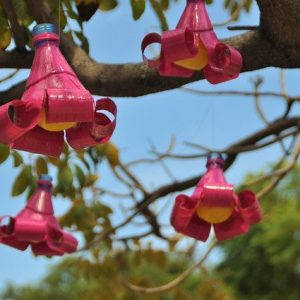 9. Use recycled materials in art projects
9. Use recycled materials in art projects
Subjects: Art
Recycled materials can make beautiful art projects such as jewelry, planters, and bird houses. Incorporating materials that would otherwise be thrown away into art projects can show your students how to find new uses for these items.
Check out this Pinterest board for some ideas to get started.
10. Life cycle analysis
Subjects: Science, with an optional technology component
One way to show students what happens when you put something in the trash versus recycling or reusing the object is to do a life cycle analysis. This is a flow chart that shows the environmental impacts of an object, from extracting the raw materials to decomposition and everything in between. When something is put in the trash instead of being reused or recycled, the life cycle assessment will show a bigger environmental impact. When something is reused or recycled, the environmental impact is less because raw materials don’t need to be extracted to create something new.
With younger students, you may want to review a very simple life cycle analysis as a class. Older students may be able to do their own research on how materials are extracted, manufactured, distributed, and disposed. You could incorporate a technology component by having them create a flow chart of their life cycle analysis.
You may want to start with this Tree Life Cycle activity, which could segue into the life cycle analysis of paper products.
 11. Research project
11. Research project
Subjects: History, social studies, with an optional technology component
Older students can conduct a research project and present their findings in a paper or presentation. You can incorporate a technology component by having students prepare their presentation in Prezi or PowerPoint. Here are some ideas:
- Research an organization that help the community reduce, reuse, or recycle in some way. What services do they provide? How do they help reduce our environmental impact?
- What are some ways we can repair or reuse items instead of throwing them away?
- What are some important moments in history related to reducing, reusing, and recycling? For example, laws, practices, or inventions.
- How do other countries around the world reduce, reuse, or recycle?
What kinds of projects have you done with your students to teach them how to reduce, reuse, recycle? Share your ideas in the comments!


